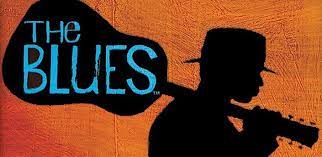The Blues’ origins can be placed in the 1890s, but the genre rose to fame significantly by the 1910s. This popular music style has influences from European music, in areas such as form, harmony, and instrumentation. As well as African influences in the music’s rhythm, tonal, and timbral flexibility. The tradition of American Blues is likened to griots, West African storytellers who maintained oral traditions, often through song. Traditionally, blues music consists of a twelve-bar AAB form; it revolves around the tonic, subdominant, and dominant chords. The exact progression is show below.

In a way, the Blues shed a light on the multifariousness of Black people at a time when many white people perceived us as an “…undifferentiated social caste with stereotyped mental and behavioral traits” (Burnim 120). This genre of music shifted their perception of Black people because of its affinity to give the unpolished truth. The lyrics in the majority of Blues songs showcase the writer’s ability to lean into serious, introspective topics.
For example, some lyrics from the song “Deep Moanin Blues” by Ma Rainey read:
Daddy, daddy, please come home to me
Daddy, daddy, please come home to me
I’m on my way, crazy as I can be
For clarity, Ma Rainey was using the word “Daddy” to refer to a partner and was expressing her longing for their return. The frankness of the lyrics in the Blues was shocking to many but it lured audiences in. Simultaneously, Black people were still portrayed and cast as ignorant, humorous, and carefree in media controlled by white people. The dichotomy of these perspectives in music grew larger as Blues gained popularity throughout the south and eventually the rest of the states. It’s also worth noting that Black women were the most popular Blues musicians, especially amongst the singers. Black women dominating this genre is understandable because we face much of the same racism that Black men do accompanied with sexism.
The innovations made in artistic expression are indicative of Black culture and, as the Blues’ blossomed, Black people shifted the connotation of many natural experiences. Through song and sarcastic humor, we were able to express our personal lives in a way that was entertaining and trailblazing. Variations of the twelve-bar-blues are still performed to this day.


